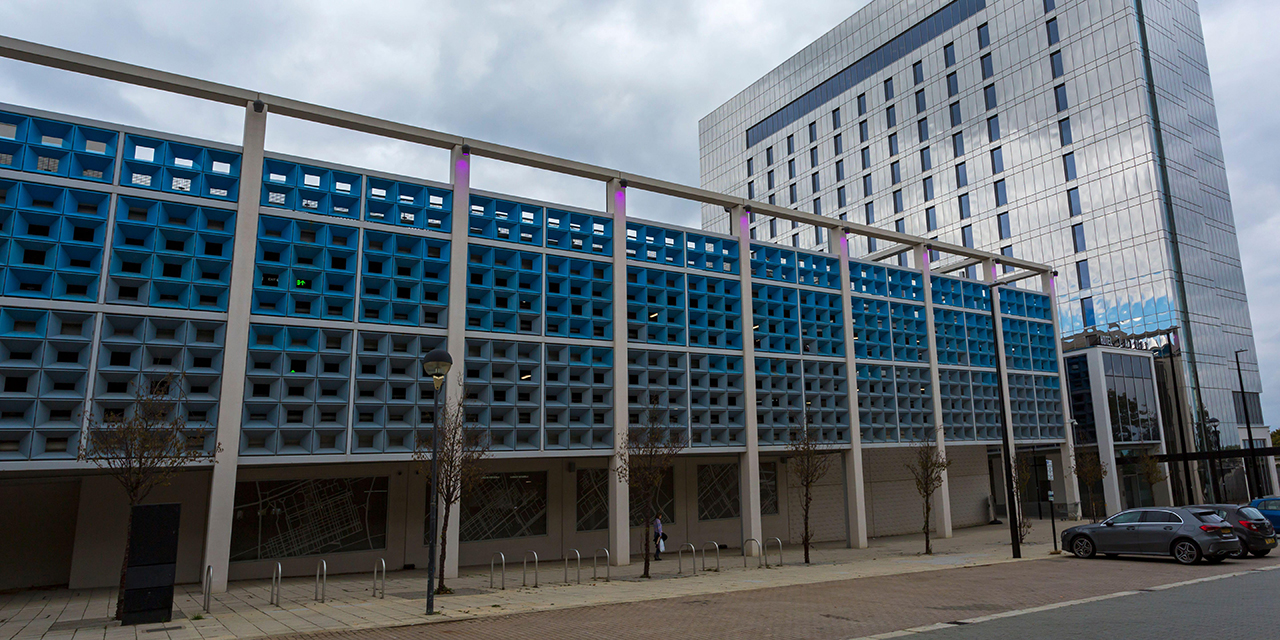
The last time I had to take a train from Milton Keynes, in 1996, it was canceled, prompting furious grumbling from everyone on the platform. In fact, the canceled train had crashed nearly 40 miles away, and, by some strange coincidence, I was acquainted with the one person killed in the crash, Ruth Holland. She was the reviews editor of The British Medical Journal, in the technologically prelapsarian days of book reviews in that august journal, and I had much enjoyed talking with her about the reviews she had asked me to write. She was a witty writer herself, with an outlook congenial to me:
It must be one of Nature’s jokes that those most eager to talk about themselves are the ones with the least interesting things to tell. Nothing brings on the yawns more quickly than earnest self-revelation, and there’s a lot of it about these days, when we’re all being urged to dig into the unconscious, bare the soul and generally let it all hang out.
I doubt that today’s BMJ would publish anything so skeptical of mass self-absorption.
Finally, a reason to check your email.
Sign up for our free newsletter today.
I am not particularly superstitious, but the mind has a natural tendency to seek meaning in coincidence. What were the odds that I would be waiting for the train that crashed and killed an acquaintance of mine? They could never be worked out; there was no meaning in the coincidence, as a numerator without a denominator is useless. Yet, in my mind, the city of Milton Keynes has remained inextricably linked with Ruth Holland’s death.
Few reasons exist to go to Milton Keynes unless you have specific business there. My business on the day of the crash was to prepare a medical report on a young murderer held in the city’s prison. If I remember rightly, he was not very nice. More recently, I came to the city for a gallery visit that proved rewarding.
Milton Keynes is a new city, conjured out of almost nothing in the 1960s to relieve overcrowding in London. It was planned to sit equidistant between London, Birmingham, Leicester, Oxford, and Cambridge, and, in a sense, it has been a great success. Its population is now over a quarter of a million; it is spacious and congestion-free and is now one of the nation’s largest hubs of startup businesses. It is also the location of the headquarters of the Open University, one of the few unequivocal successes of Harold Wilson’s government of the 1960s. This correspondence university has upheld its academic standards far better than most schools and, for many years at modest cost, has provided a second educational chance to hundreds of thousands.
But the city itself is, to me, infinitely depressing, not least because it offers such a window into the minds of our post-1945 politicians, bureaucrats, and architects—rationalist social planners to a man (rarely a woman). Milton Keynes is a kind of laboratory for raising humans in social petri dishes.
Like Brasilia, Milton Keynes was built at the apogee of the automobile as the symbol of wealth, progress, and individual freedom. Pedestrianism at the time was regarded by its planners with about as much respect or interest as astrology or necromancy. Cars embodied the future—dynamic and unstoppable—while human legs belonged to the past. Every adult, it was assumed, would own a car and drive everywhere for every need. Public transport would exist, but only as a vestigial remnant, like an organ that the body no longer requires.
The architecture was to be entirely modernist, with plate glass especially favored. No modernist ever thinks that his own modernity will ever be passé or soon look tawdry and old hat. One small mercy, however, was that Milton Keynes’s planners initially imposed height restrictions: no building was to be “taller than the tallest tree”—that is, no higher than six stories, with houses limited to three. This deprived modernists of their most effective means of impressing or overwhelming the populace—sheer scale. Without towering structures to dwarf mere humans into insignificance, they were denied the anxious awe that vastness can inspire.
More recently, the height restrictions in Milton Keynes have been relaxed somewhat, when the city fathers decided that their city needed “landmark buildings,” an unintentionally revealing expression suggesting a visually featureless urban desert. To fulfill this need, the 14-story Hotel La Tour arose in Milton Keynes, indistinguishable from any such hotel from Novosibirsk to Guatemala City, as if some global planner had decreed that henceforth all modern hotels must be uniform.
Like Le Corbusier before them, the tidy-minded planners of Milton Keynes clearly detested the street—the unplanned urban space where spontaneity thrived, life unfolded beyond prediction or control, and the unsettling possibility of unsupervised sociability remained. Like everyone else at the time, they failed to anticipate that new means of population surveillance would soon emerge, surpassing even their most ambitious expectations.
If one were to design not just a soulless city but one destined to remain so forever, Milton Keynes would serve as an excellent model. Built on a grid system, its main roads are wide, expansive, and featureless. Lined with modernist office blocks—not the worst of their kind, but uniformly cold—they differ within the constraints of their style, though this is hardly a virtue when the style itself is so inhuman. Their puritanical avoidance of ornamentation precludes any possibility of affection, as if designed in anticipation of Oliver Cromwell’s iconoclasts returning to strip away even the barest hint of embellishment.
But what is the architecture trying to say? That we are new, thrusting, future-oriented, non- or even anti-traditional. Yet, Milton Keynes’s per-capita economic output is merely average for the country—likely below average for the relatively prosperous region in which it is situated. This is especially true when considering its demographic skew toward a higher-than-average proportion of working-age residents. Milton Keynes is no place for the elderly, particularly those who have given up driving.
Various residential parts of the city bear names with vaguely, but misleadingly, rural connotation, such as Eaglestone, Netherfield, and Oldbrook. The housing is not impoverished within the raw financial meaning of the word “poor,” but it is mean-spirited and lacking in aesthetic ambition or even awareness that beauty is desirable or possible. Of course, people build lives for themselves wherever they are, regardless of their surroundings. Agatha Christie once remarked that an English village, despite its rosebushes and hollyhocks, harbors wickedness. No doubt the featureless housing estates of Milton Keynes conceal as much human intrigue as anywhere else—perhaps even more, given the pall of boredom that seems to hang over its lifeless streets, compelling residents to seek interest wherever they can find it.
Here is housing designed by bureaucrats, sociologists, and their ilk—those who, through careful research, have determined what the good life (for others, not themselves) should consist of: a precise number of square feet per inhabitant, a calculated volume of air, a prescribed number of radiators. What cannot be quantified or entered into a spreadsheet simply does not exist in their view, and therefore no criticism on merely aesthetic grounds could matter.
They have their intellectual allies. In the Guardian, architectural critic Oliver Wainwright argued that aesthetic considerations—the mere sight of buildings that appeared to him to obsess the late Roger Scruton—were much less important than such features as good ventilation, avoidance of damp, and so on. Why beauty in the twenty-first century should be incompatible with proper ventilation is not immediately clear.
On my more recent visit, my wife and I took a taxi from the station to the Milton Keynes Gallery to see an exhibition. Until I read a favorable review of the show (also in the Guardian), I hadn’t even known that Milton Keynes had an art gallery. Had I been asked, I would have guessed it unlikely—but to their credit, the planners had not overlooked this cultural necessity.
It was slightly more than one and a half miles along the roads (grandly named boulevards) from the station to the gallery. On the way, we asked the taxi driver, of Pakistani origin, whether he liked living in Milton Keynes. “I’ve lived here for more than 30 years,” he said. This ambiguous reply—it could have meant anything from “I love it and would live nowhere else” to “I’ve wasted my life here,” passing through “It’s all right, I suppose”—somehow captured the spirit, or lack of spirit, of the place. We did not have time to examine his meaning further.
The gallery came as a surprise to us in two senses. First, if it had not proclaimed itself a gallery, nothing in its exterior would have suggested it. It could have been a gym or a carpet warehouse. Second, nothing prepared us for its excellence. We left as uplifted as we had arrived downcast.
Undistinguished as the building was, it offered excellent exhibition space inside—large, airy, whitewashed rooms, though ill-suited to small exhibitions with only a few items on display. While the rooms lacked intimacy, it was hard to imagine them ever feeling overcrowded—Milton Keynes is not on any art lover’s list of destinations. Yet this is not altogether a disadvantage. Crowds at blockbuster exhibitions are the bane of an art lover’s experience, forcing him to view exhibits as if through a glass darkly, glimpsed between shifting bodies. At the Milton Keynes Gallery, you can approach an artwork and linger over it without the feeling of selfishly holding up the production line.
The exhibition, Beyond the Page: South Asian Miniatures and Britain, 1600 to Now (with a catalog published last year by Bloomsbury), explored the mutual influences of Indian and British art from the Mughal period to the present. Given Britain’s imperial history, it is unsurprising that the country holds large collections of Indian paintings. What was unexpected, however, was the exhibition’s focus on the art itself, avoiding the usual clichés of contemporary historiography. These days, it is rare to escape the curatorial hectoring about the sins of the past—as if there were not enough in the present to contend with. Too often, curators assume the roles of world-expert historians, presiding over a permanent tribunal to judge history’s guilt, as if such moralizing somehow grants them, and their audiences, absolution.
I have always liked Indian miniatures, of the several schools and styles. Knowing little of the history, religious conceptions, or mythology behind them, I nevertheless respond to their sheer beauty, suggesting that the aesthetic faculty is not simply the product of a particular political, economic, or social dispensation, but can cross cultural bounds, even gulfs.
The British collectors of Indian art clearly deemed it worth preserving. True, Sir Henry Wellcome—the American-born pharmacological magnate who founded the Wellcome Museum and Library, the world’s greatest repository of medical history—was primarily interested in anything with even the slightest medical relevance, acquiring pieces through paid agents across the globe, including in India. But for other collectors, aesthetic quality was paramount. It is impossible to look at Indian miniatures without admiring the sophistication and refinement of the civilization that produced them, even if, as Marxists might argue, its economic base is scarcely evident in its art.
European influences—though not British—began to appear in Indian art by the mid-seventeenth century. Later, for many years, the East India Company employed Indian artists not only to create exquisite illustrations of the subcontinent’s flora and fauna but also to depict its ordinary inhabitants, particularly those outside the courtly or upper classes. This, as far as I can tell, was rarely, if ever, done before. Yet, unless one views art solely as political propaganda, the earlier focus on the nobility does nothing to diminish the pleasure that these works provide.
Such little of contemporary Indian art as I know seems to me a lot more nourishing and substantial, aesthetically, than contemporary Western art, at least in its celebrity, Damien Hirst–Jeff Koons wing, whose work strikes me more as artifact-as-show-business than art proper.
Indians learned—or were taught—to despise their own artistic tradition; yet it was also a British art administrator, Ernest Binfield Havell (1861–1934), principal of the Government School of Art and keeper of the Government Art Gallery in Calcutta, who revived interest and pride in it. From then on, the miniature painting tradition enriched not only Indian but also British art, particularly through the work of Howard Hodgkin, whose abstract paintings somehow retain a sense of representation.
In some exhibits, I struggled to see the connection to miniatures; but in many, it was clear. In Imran Qureshi’s Blessings upon the Land of My Love, two paintings executed in the meticulous Mughal style, we see an empty courtyard set against a near-golden ground, lush tropical vegetation beyond it. The courtyard is spattered with red—eerily reminiscent of the aftermath of a terrorist attack, whether by bomb or automatic weapon. A near-paradise is thus transformed into a living (or dying) hell; yet the artist refrains from propagandistic hints about the perpetrators, leaving space for reflection.
Another highlight was the work of Ali Kazim, who studied both in Pakistan and the Slade School in London. His magnificent monochrome Hudhud (hoopoe) shows the sacred bird of Islam flying above two large flocks of birds, either flying in unison or running along the ground, to an unseen destination, as if by some magnetic compulsion. There is an obvious reference to the twelfth-century Persian Sufi poem of Farid ud-Din Attar, “The Conference of the Birds,” in which a bird of every species, under the leadership of the hoopoe, undertakes a long flight in search of ultimate wisdom. But in the unreflective headlong-ness of the birds in Ali Kazim’s picture, do we not—or, at any rate, can we not—see folly in this search for wisdom?
Another of his works is an intensely moving series of small portraits of 16 children, each in the dress of a religion or sect of a religion, and each individual depicted with tenderness. One not only feels immediate affection for them but also rejoices in their sheer diversity. But how can religious conflicts, hatreds, and violence emerge from such innocence? This is a question of our time—perhaps of all time.
The handsomely produced catalog is divided into two main sections: Historical and Contemporary Works. A striking and revealing difference emerges in the writing styles of the two sections. The introduction to the historical section is clear and accessible to any reader. By contrast, the contemporary section includes short essays by some of the artists, filled with the kind of convoluted, nebulous statements whose negation conveys little different meaning from their assertion—the kind of writing now expected in discussions of contemporary art, as if it carried a bad conscience or something to obscure.
To illustrate, I take passages at random from the first, historical section, and the second, contemporary section.
To counteract the growing intellectual apathy towards India [in early nineteenth-century Britain], the Sanskrit scholar and former president of the Asiatic Society of Bengal Henry Thomas Colebrooke (1765–1837) arranged a meeting at his house in London in January 1823, the purpose of which was to “consider the expediency of instituting a Society for the encouragement of science, literature and the arts in connection with India.”
Then:
I have also looked at art making as embodied labour, examined the relationship between decolonial art practice and the archive and its porousness for creative repurposing, and the interrelation of the miniature, its provenance and the museum. My practice through the broader manuscript tradition casts intersections of poetry, dialogues of how to view the miniature, calligraphy in relation to the philosophy of line, expansions in media to animation, music and sculpture.
Verbiage like this, alas, is now de rigueur among artists and art critics, dulling both the ability and the will to judge the true value of anything. I can only hope that the influence of the contemporary West will wane in Indian and Pakistani artistic circles. Still, the show was a triumph. On our way out, we discovered—through previous catalogs—that under its director, Anthony Spira, the gallery has a strong record of excellent exhibitions. Nothing could have been more unexpected.
We decided to walk back to the Milton Keynes station. In the mile and a half, we passed no more than three people. A curious deadness hung over the city, as if a neutron bomb had struck it, killing the population but leaving the buildings intact. True, one block was home to numerous restaurants and fast-food outlets, adhering to the Corbusian principle that urban functions should be geographically concentrated—much like red-light districts once were, though those emerged spontaneously rather than by design. Yet, despite it being lunchtime, the restaurants seemed far from bustling. Perhaps the Internet and the pandemic have diminished the habit of eating out in the city, just as they evidently doomed two vast emporia of toys and household electronics along our route—warehouses now standing empty, unlikely to be repurposed anytime soon (to borrow a term from the contemporary section of the exhibition catalog).
For a pedestrian to cross at intersections of the grid-pattern roads, he must take underpasses, seemingly designed for the encouragement of muggings and rape after dark; but judging by daytime frequentation, I doubt that many would venture there at night, even if they had some reason to do so. Crime in Milton Keynes is somewhat above the national average, but its population is younger, so perhaps this is not unexpected. One in ten people reported being a crime victim in 2023, and one in 30 of a violent crime. Given the inefficacy of the police—solving 21 of 337 burglaries, five of 360 thefts, and so on—it is striking that only a tenth of the population were victims.
Certainly, the planners of the glorious, rational future did not plan for all this—at any rate, not knowingly.
Photo: The 14-story La Tour Hotel in Milton Keynes (Carolyn Jenkins / Alamy Stock Photo)
Source link

















